When You Need Unparalleled Spine Expertise

Advanced, Comprehensive, Multidisciplinary Approach
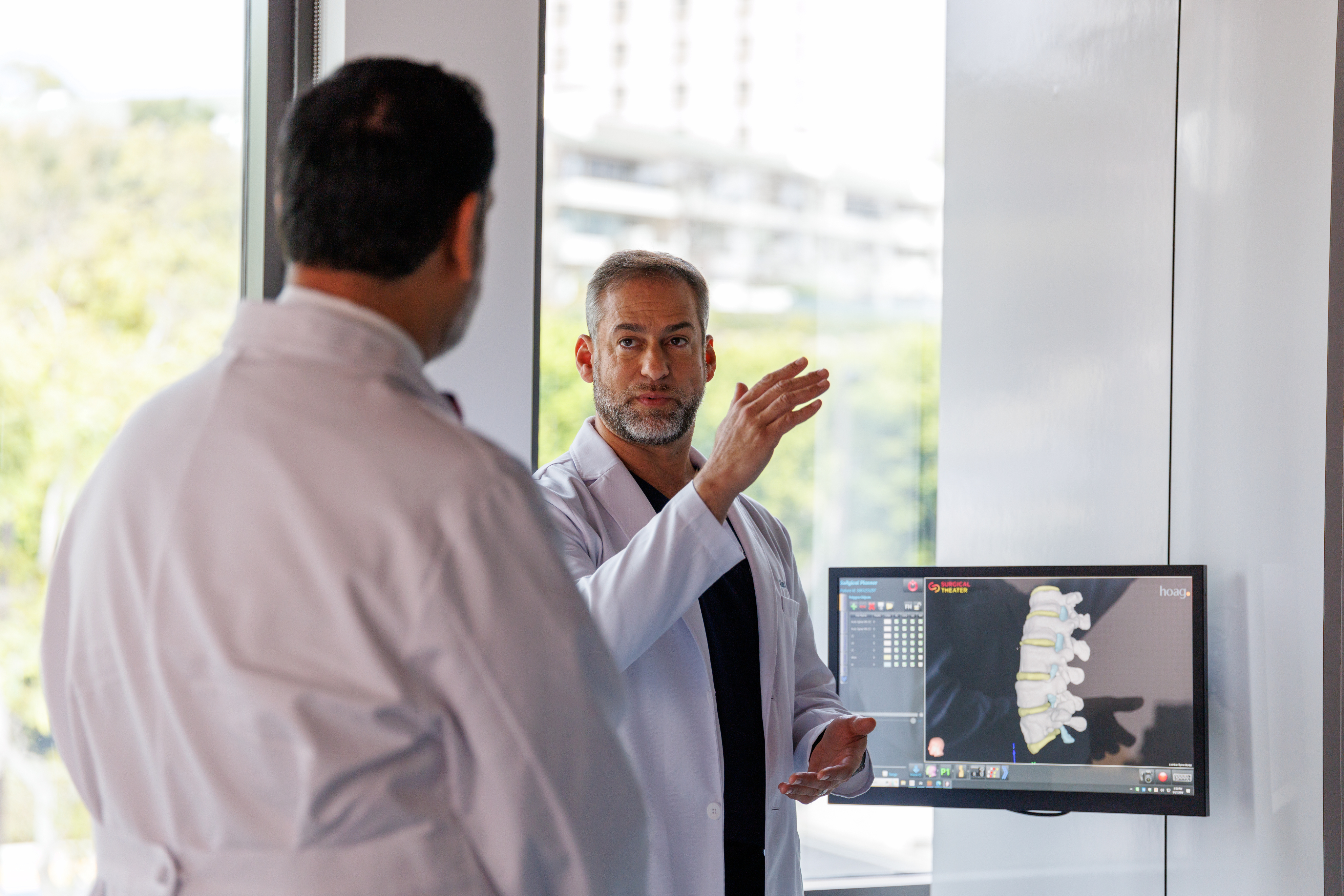
Minimally-Invasive Surgical Techniques
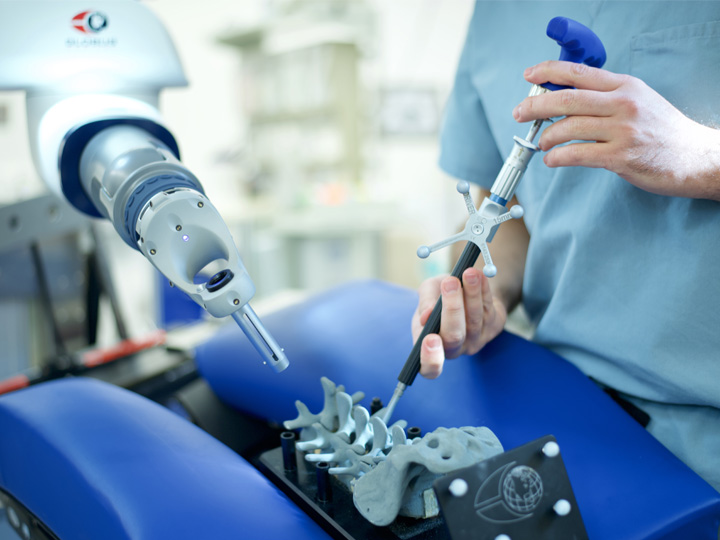
Second Opinion

Pain Management & Rehabilitation

Take our online health risk assessment to discover how much of an impact your back pain is having on your life. After taking this assessment you'll get more information on what your next steps should be.
As it applies to spine health, only about 10% of the patients who are seen by a pain management specialist will need spinal surgery. The vast majority of patients will get better using comprehensive, conservative treatment techniques.
From pain management to neurosurgery, Hoag Spine Institute's team of spine experts are each uniquely qualified within their subspecialty to understand what new treatment options and advanced technological approaches are available. Our multidisciplinary approach to second opinions offer a thorough review of your medical records ensuring all of your questions are answered.





Hoag spine specialists are pioneers in co-developing augmented reality technology for treating patients with spine disorders. Recently FDA approved, Hoag successfully performed spinal fusion using this innovative technology.
Advanced Robotics available at Hoag include Mazor X Stealth™ Edition Robotic Guidance Platform for Midas, the most advanced robotic-assisted, minimally invasive spine surgery technology available.
The West Coast’s first 7D surgical flash navigation system, a machine-driven surgical navigation system without radiation improves surgical accuracy and improves outcomes for patients and speeding up recovery.
Hoag is the first adult hospital in Orange County to offer the EOSedge System, which provides a complete picture of your body using the lowest radiation possible.

Hoag Health Center - Newport Beach

Hoag Health Center Irvine - Sand Canyon
“Dr. Kanter has the best bedside manner. He was calm, and I felt very reassured that this is something that can be fixed. He wasn’t pie-in-the-sky, but he was confident that he would be able to relieve the pain.”

Get care from medical providers that fit your needs in a location near you.
Find a providerDidn’t see what you’re looking for? Reach out and we’ll make sure you get what you need.
Contact usChronic pain in the neck and back is pain associated with the spine that lasts six months or longer. This pain in the neck and back can be constant or recurring, range from mild to debilitating and persist for months or even years. Depending on the severity and duration of the issue, chronic pain in the neck or back can have a significant impact on a person’s mental health, level of activity, ability to sleep, productivity at work and overall quality of life.
Degenerative disc disease (DDD) is a condition in which the spinal discs between each vertebra begin to deteriorate or break down over time.
The spinal discs serve several important functions, including acting as shock absorbers for the spinal column, allowing the spinal column to flex, bend and twist. In addition, the intervertebral discs cushion each of the vertebrae that make up the spine.
Over time, due to normal aging, injuries and wear-and-tear, the rubbery discs of the spine can experience disc degeneration, a process in which the spinal discs wear down and slowly lose their flexibility, elasticity and shock-absorbing abilities.
Because the spinal discs are very close to the spinal cord and nerve roots, disc degeneration can cause pain and lead to other problems, such as spinal instability and herniated discs .
A herniated disc (also called a bulging disc, disc herniation, a slipped disc or a ruptured disc) occurs when one of the spinal discs — the rubbery pads between each vertebrae that cushion the spinal column while allowing the back to be very flexible — becomes damaged to the point the soft, inner disc material begins to bulge through a tear in the disc’s strong outer shell.
A herniated disc can put pressure on the spinal cord or spinal nerve roots. Depending on how extensive the herniation is and where it occurs in the disc, that can result in numbness, loss of muscle strength and back or neck pain that may be severe.
Kyphosis is a condition in which the upper back develops an exaggerated forward curve. Those with the condition often look stooped or “hunched over,” with rounded shoulders, even when they’re standing up as straight as they can. In the past, kyphosis was sometimes called “roundback” or “hunchback.”
Many types of kyphosis go beyond poor posture, and create physical issues with the spine that make it hard, painful or impossible to fully stand up straight. While mild kyphosis may be barely noticeable, in those with severe kyphosis, the effect on the appearance can be substantial, including a visible hump.
In addition to pain, stiffness and inflexibility in the upper back, kyphosis can cause self-esteem issues due to the impact on a person’s posture and the way they look.
In severe cases, involving what’s called hyperkyphosis, the hunched posture and excessive outward curve of the spine can begin to compress the abdomen, causing issues like swallowing difficulties and acid reflux.
Lower back pain, also called “low back pain” or lumbar spine pain, is a common condition characterized by pain in the lower part of the back, usually between the lower ribs and the top of the buttocks.
Lower back pain can range from a dull ache to a sharp, stabbing pain that can vary in intensity from mild to severe. In some cases, pain in the lower back can also radiate out to other areas of the body, including the buttocks, legs and feet.
Acute lower back pain only lasts a short time, usually improving with conservative treatments like over the counter pain relievers and bed rest. However, if lower back pain lasts more than three months without relief, it’s considered chronic lower back pain. Chronic back pain may indicate a more serious issue.
Those with chronic pain in the lower spine may need other treatment options to achieve back pain relief, including lifestyle changes, injections of nonsteroidal anti-inflammatory drugs, prescription pain relievers, muscle relaxants, transcutaneous electrical nerve stimulation, massage therapy or physical therapy.
In severe cases involving muscle weakness and muscle spasms, or if severe lower back pain persists despite treatment with more conservative measures, surgical procedures like spinal fusion or disc surgery may have to be considered to relieve pressure on nearby nerves and address the root cause of pain in the lower back.
Myelopathy refers to symptoms that can occur due to the severe compression of the spinal cord.
When the spinal cord is compressed (squeezed) due to an outside force putting pressure on the spinal nerves, it can cause various symptoms, including chronic pain, numbness or difficulty with moving certain parts of the body.
Compression of the spinal cord can stem from various chronic, or long-term, conditions, including spinal stenosis, disc degeneration or bone spurs.
However, people can also experience acute myelopathy, meaning that symptoms come on quickly, usually due to the effects of a spinal injury. Whether chronic or acute, myelopathy can severely impact a patient’s quality of life, especially if the condition is left untreated.
Neck pain, also called cervical pain or cervicalgia, is a common issue characterized by pain, stiffness or discomfort in the neck.
The neck consists of the upper seven vertebrae in the spinal column, along with the muscles, spinal discs and other soft tissues that help support and move the head. Issues like stress, disc degeneration or injury to these tissues can result in neck pain.
Neck pain can range from mild to severe. It can also be felt in different ways, with some people experiencing neck pain only when they perform certain movements, like turning their head or looking up or down. Others experience persistent pain all the time, even while holding their head still or when lying down.
Neck pain is also categorized by where it is felt. Radicular neck pain radiates from the neck to the upper body, sending severe, shooting pain into the arms and shoulders in serious cases. Axial neck pain, on the other hand, is felt solely in the neck, and doesn’t extend to other parts of the body.
Most neck pain isn’t dangerous, and improves on its own through at-home treatments like rest and over-the-counter pain medication. Neck pain that lasts only a few days or weeks is considered acute neck pain. Long-term neck pain that lasts more than three months is considered chronic neck pain.
Nerve Compression (also known as a “pinched nerve”) occurs when there is compression or pressure on a nerve related to the spinal column. Damage from a pinched nerve may be minor or severe and can cause temporary or chronic problems. In some cases, damage from a compressed nerve is irreversible. The good news is treatment usually relieves pain and other troubling symptoms.
Osteoarthritis, also called OA, is a type of progressive degenerative joint disease that can cause pain, stiffness, swelling and reduced range of motion in joints all over the body. It is most often diagnosed in the spine, knees, hands and hips. “Progressive” means the condition usually gets worse over time.
Osteoarthritis is the most common form of arthritis. In those with osteoarthritis, the cartilage that normally cushions and protects the joints begins to wear down and deteriorate. A tough, flexible connective tissue found throughout the body, cartilage plays a crucial role in healthy joint function, serving as a kind of natural shock absorber, helping protect the joints and keep bones from rubbing painfully together.
Once the cartilage in a person’s joints begins to deteriorate due to osteoarthritis, the joint can no longer operate as smoothly as it should. That can lead to a variety of often-painful OA symptoms. The most common symptom of osteoarthritis is chronic pain and joint stiffness in affected joints, especially after a period of inactivity like sitting still for a while.
Osteoporosis is a condition that involves having weak or brittle bones, which can increase a person’s risk of bone fractures.
Usually diagnosed in people over 50, osteoporosis may cause the bones to become so weak that a broken bone can occur from a minor fall, weight-bearing exercise or normal activities like bending down to lift a small child or laundry basket. In some cases of severe osteoporosis, even coughing or sneezing can cause a fracture.
While osteoporosis is a disease that is most widely known for its impact on older, postmenopausal women, both men and women can have the condition. According to the National Institutes of Health, osteoporosis affects 1 in 3 women versus 1 in 5 men.
Osteopenia is the condition that often develops into osteoporosis. It’s defined as having bone mineral density (BMD) that’s below normal, but which doesn’t yet meet the official diagnostic criteria for osteoporosis.
Usually diagnosed through a bone density scan, osteopenia is, therefore, a sort of “pre-osteoporosis,” and should usually be taken as a signal to get serious about improving bone density and bone health, especially if you’re at higher risk for the condition.
Radiculopathy, commonly referred to as a “pinched nerve”, refers to a medical condition where there is irritation, compression, or inflammation of the spinal nerve roots, often resulting in pain, weakness, numbness or tingling that radiates along the path of the affected nerve.
Pain associated with radiculopathy can severely impact a patient’s quality of life and, in some cases, can lead to muscle atrophy.
The spine provides the body with structural support while also providing a remarkable amount of flexibility. The spine is made up of bones known as vertebrae, which are sandwiched between gel-like, cushioning pads known as intervertebral discs. Together with muscles and tendons, these structures form what’s called the spinal column — commonly referred to as “the back.”
While the spine promotes an upright posture, it also serves as a protective sheath for the spinal cord. The spinal cord is a network of nerves that run through a hollow space in the spine called the spinal canal. The spinal cord serves as an informational highway between the brain and the rest of the body, sending nerve impulses back and forth to help the body function. Nerve roots exit from the spine, transmitting nerve impulses from the spine to the body's muscles.
Sometimes, people can experience what’s known as nerve compression, in which one of the roots of the spinal nerves has too much pressure put on it by issues like herniated discs or bone spurs. That can result in severe pain, and the condition known as radiculopathy, or a pinched nerve root.
For your doctor to diagnose radiculopathy, he or she may perform a physical examination and order tests like an MRI, CT scan or nerve conduction study. Treatment for radiculopathy care typically begins with nonsurgical treatment, like physical therapy, or a series of epidural steroid injections to relieve nerve root inflammation. However, in severe cases, surgical procedures may be necessary in order to relieve pain and restore muscle strength.
Scoliosis is a type of spinal deformity involving an abnormal, sideways curvature of the spine.
Everyone has natural curves in their spine. But in those with scoliosis, these curves become abnormally severe, to the point they can begin to cause health problems or affect a person’s posture and appearance. In severe scoliosis cases, the spine can resemble a “S” or “C” shape in X-rays.
The abnormal curvature of the spine that’s characteristic of scoliosis can occur in different areas of the spine. In some cases, it can twist individual vertebrae as well. Scoliosis can vary in severity from person to person, with cases classified as mild, moderate or severe scoliosis.
Depending on the degree of spinal curvature, people with scoliosis can experience a range of issues with their appearance, including visible position differences in the height of their hips, shoulders or shoulder blades, or having a rib cage that’s more prominent on one side of the body than the other.
Sciatica is an issue in which pain occurs due to damage or pressure on the sciatic nerve. Beginning in the lower back, the two sciatic nerves branch away from the lower spine (the lumbar spine) before running through the hips and buttocks and down each leg.
Sciatica usually only affects only one side of the body. It can feel like stabbing, crushing or shooting pain that radiates from the lower back and upper buttocks and down one leg. In severe cases, the pain can reach as far as the feet and toes.
Sciatica pain usually occurs due to something pressing on or irritating the spinal cord or nerves, like a herniated disk . That can cause inflammation of the sciatic nerve that is interpreted by the brain as severe leg and back pain, with the pain radiating along the affected nerve pathway.
Spinal deformities refer to unnatural curvatures of the spine resulting from damage to the spinal column, such as damage caused by fractures or ankylosing spondylitis (Bechterew’s disease), or various defects and congenital conditions that cause the spine to grow unevenly. Common spinal deformity types include Scoliosis, Kyphosis, and Spondylolisthesis.
A spinal fracture is a break or crack in one of the vertebrae that make up the spinal column.
In younger people, spinal fractures occur most often as a result of high-energy trauma caused by a fall, automobile accident, sports injury or even issues like physical assaults or gunshot wounds.
Extreme trauma can cause especially severe fractures of the vertebrae, known as burst fractures. In extreme cases, these fractures can cause a broken spinal vertebra to shatter in multiple directions. Usually occurring due to violent impacts from car accidents or high falls onto hard surfaces, a burst fracture can scatter shrapnel-like bone fragments into surrounding tissues, including the spinal cord and nerve roots. That’s why experiencing a burst fracture increases the risk of the spinal cord being completely severed, potentially resulting in paralysis.
Spinal fractures can also happen as a result of having weakened bones due to osteoporosis , a disease involving bone-density loss that usually occurs in older people. Osteoporosis can reduce the density of bones, which can make them weaker and more likely to break.
When osteoporosis affects the spine, the result can be what are called vertebral compression fractures. In severe cases of osteoporosis, spinal fractures can occur even during minor falls or ordinary movements, like bending down to pick up a moderately heavy object.
Spinal fractures are more than just injuries to the bone; they can have a profound impact on a person’s overall health and mobility. The potential for paralysis or other neurological or mobility issues makes these injuries particularly serious.
Recovery may involve a minimally invasive procedure or more significant surgical interventions in the case of unstable fractures, often followed by physical therapy and rehabilitation to restore function and mobility as much as possible.
That said, minor spinal fractures, appropriately treated, may not adversely impact a patient’s quality of life or lead to debilitating consequences, as effective treatment options are readily available.
Spinal stenosis is a narrowing of the spaces within the spine, which can put pressure on the nerves that travel through the spine. This causes a “pinching” of the spinal cord and/or nerve roots, which leads to pain, cramping, weakness or numbness in the body.
Spinal tumors are abnormal growths of tissue inside the spinal column. If they originate in the column, they are called primary tumors, which can be either benign or malignant. If they originate in another part of the body, they are likely malignant and called secondary or metastatic tumors.
Spondylolisthesis is a disorder involving a vertebra that slips over the bone below it. It typically results from stress fractures or cracks that occur in one of the spinal column. If the affected area doesn’t heal correctly, there is a chance that continued stress can lead to the further slippage of the impacted vertebrae and recurrent low back pain. The condition can also cause spinal deformity and back or sciatic nerve pain and weakness that limits a person’s activity level.
Tailbone pain, also called coccydynia, is pain in and around the small triangular bone at the very bottom of your spinal column, above the cleft of your buttocks. The tailbone (coccyx) is made up of three to five small bones that can be injured by trauma during a fall. Tailbone pain can also be caused without trauma by prolonged sitting on a hard surface. Less commonly, patients may have degenerative joint changes or experience postpartum tailbone pain.
Whiplash is a neck injury that can result from the neck bending forcibly forward and backward, usually due to a sudden movement, jolt or impact from behind. It’s called whiplash because the violent movement of the head and neck that can cause a whiplash injury is much like the cracking of a whip.
Whiplash is most commonly caused by a rear-impact car accident, but the condition can also be caused by a variety of other factors, including a full-contact sports injury, a fall or physical abuse and assault.
Depending on the severity of the injury, whiplash can cause limitation in the neck’s range of motion, induce muscle spasms in the neck and arms, and cause neck stiffness and chronic pain. It is a fairly common injury, affecting millions of Americans every year.
While most people with a whiplash injury recover within a few weeks through conservative treatments such as physical therapy and pain relief medications, some patients may continue to suffer from the symptoms of whiplash for several months or longer.
Comprehensive evaluation with accurate diagnosis is the foundation for achieving highly successful outcomes. That’s why it’s important to seek care from Hoag’s Spine Institute providing a multidisciplinary, specialized team of spine care experts experienced in the accurate diagnosis of back pain and other spine-related conditions.
Our best-practice care pathways include patient evaluations by primary care physicians, physical therapy, occupational therapy, pain management specialists, neurologists, neuroradiologists, and neurosurgical consultations when appropriate. Hoag also offers a dedicated nurse navigator to guide you through your spine care journey.
Beginning with a thorough evaluation that includes a comprehensive physical exam, personal medical history review and state-of-the-art diagnostic workup, our team carefully evaluates and pinpoints the source of neck and back pain so the most appropriate and conservative treatment options can be employed.
Hoag’s state-of-the-art diagnostic technologies provide our team with the latest modalities in the accurate diagnosis of spine-related injuries, diseases and other disorders. Some of the progressive imaging studies that may be utilized include MRI, CT and Digital X-Ray.
Hoag was the first adult hospital in Orange County to offer the EOSedge System, the most advanced technology available today. This innovative technology is the next step of connecting imaging to care, improving patient safety and treatment outcomes.
EOSedge is a precise, low dose imaging system that delivers seamless full body, high-quality images covering the full set of musculoskeletal and orthopedic exams. This next generation solution captures fully functional 2D/3D biplanar images in seconds, using a high-resolution photon-counting detector for outstanding image quality for a broad range of patients. Its innovative design minimizes radiation exposure following an ALADA* principle.
This state-of-the-art system offers significant value in showing the impact of spine issues on the rest of the body. Since spine issues can result in shoulder, hip and knee discomfort, being able to see the entire skeleton and the pain points created by the spinal alignment will not only enhance patient education of their current state, but also help physicians diagnosis the reason for those discomforts in a more timely fashion.
Hoag’s world-class neurosurgeons can more effectively, and with less radiation impact on the patient, make well-informed clinical decisions at each point of patient care.
EOSedge is powered by a high-resolution photon-counting detector to optimize image quality. This system captures 1:1 images in a calibrated environment with no stitching or magnification, supporting well-informed clinical decisions at all stages of care.
EOSedge uses new Flex Dose™ technology to modulate radiation throughout scans using body morphology. Flex Dose delivers up to an 80% overall radiation reduction compared to the same acquisition without Flex Dose5.
EOSedge’s open cabin design allows medical teams to capture full body images safely, quickly, and comfortably for a wide range of patients. Its large acquisition zone and accessible design enables easy entry and positioning for children, elders, and other patients.

Hoag Spine Institute is committed to accurate diagnosis, combined with progressive therapeutic options.To schedule a comprehensive diagnostic evaluation, or a second-opinion consultation with a Hoag spine care specialist, please call 949-764-1411.
Hoag Spine Institute is committed to accurate diagnosis combined with progressive therapeutic treatment options for our patients. We want to make it easy for patients and the physicians who refer them to access Hoag’s world class spinal care. Visit our Get Started page for everything you need to begin your journey to spine wellness.





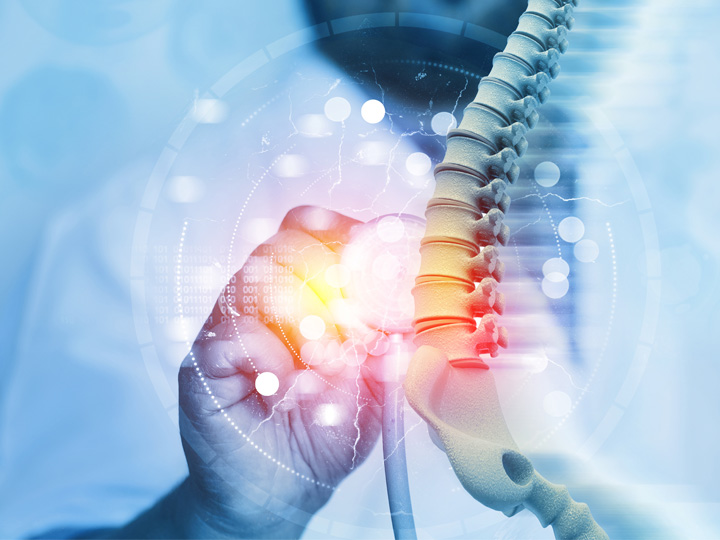
How do you get back to living your best possible life after spine surgery? Should you need rehabilitation services after surgery, the Fudge Family Acute Rehabilitation Center provides comprehensive care and individualized programs with 24/7 nursing, a team of certified therapy experts and full-time medical director – all with one goal in mind, getting you back to living your best possible life.
Our acute rehabilitation care team features physicians, occupational therapists, physical therapists, speech language pathologists, recreational therapists and social workers.
Clinical trials are research studies that evaluate the safety and effectiveness of new ways to diagnose, treat and prevent diseases or conditions. They follow strict scientific standards to protect patients and help produce reliable results that can lead to new advances in medical care.
When you need a second opinion, choose personalized care at the Hoag Spine Institute. Your second opinion starts today with our fellowship-trained spine experts. Have confidence in your decision, choose the spine experts at Hoag.
From pain management to neurosurgery, Hoag Spine Institute's team of spine experts are each uniquely qualified within their subspecialty to understand what new treatment options and advanced technological approaches are available today. Our multidisciplinary approach to second opinions offer a thorough review of your medical records ensuring all of your questions are answered. Most insurance plans are accepted and Hoag also offers a cash pay option. Watch our videos to learn more and find answers to common questions below.

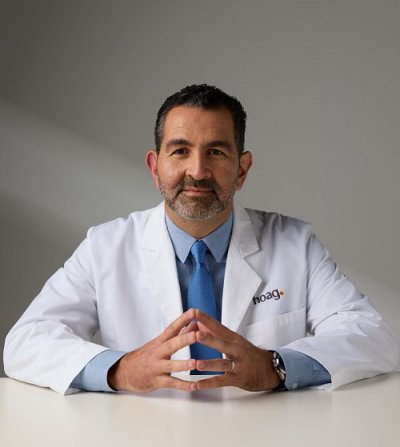
We will match you with a spine care navigator who will help you collect your medical records and guide you through the second opinion process at Hoag Spine Institute.
After your medical records have been collected, we will connect you with a spine subspecialist who is an expert in your condition for a thorough review of your medical history and recommend a course of treatment.
After submitting a request for a second opinion, one of our spine care navigators will respond within 1-2 business days. Our navigators can answer all of your questions and will guide you through the process for a second opinion.
Your spine care navigator will give you all of the guidance you need, including what type of previously obtained health records and/or imaging you may need to provide for an effective second opinion by one of our subspecialized spine experts.
Your spine care navigator will guide you through the submission process after you’ve obtained your records. You will have several options for submitting your records in a private and secure way.
Yes, Hoag Spine Institute offers secure virtual appointment capabilities. Your spine care navigator will help you schedule your virtual appointment once all of your records have been obtained and our multidisciplinary team has reviewed them.
Hoag Spine Institute accepts most insurance plans. Click here to view accepted insurance plans at Hoag.
We also offer a cash pay option. Cash pay rates are available upon request through your spine care navigator.
A second opinion from the spine experts at Hoag is easy, and your next step to ensure you're in the best care for your back or neck pain.
Call our experts today at (494) 764-1411 to schedule your second opinion.
We treat a comprehensive range of spine and nerve-related conditions, including:
Our surgical offerings include minimally invasive and advanced procedures such as Anterior Cervical Discectomy & Fusion (ACDF), Posterior Cervical Laminectomy, Lumbar Lateral Interbody Fusion (LLIF), Anterior and Posterior Lumbar Interbody Fusion (ALIF/PLIF), Microdiscectomy, and Lumbar Decompression.
If you’re experiencing chronic or radiating back or neck pain, contact our nurse navigator to schedule a consultation with a specialist and start your path to recovery.
Our multidisciplinary care team includes:
Together, we follow a conservative and preventive care philosophy. With access to cutting-edge technology, an intensive care unit, and a rehabilitation center, we provide seamless support throughout your healing journey—from diagnosis to recovery.
Hoag Spine Institute is a trusted leader in Orange County healthcare. We are known for exceptional patient care, world-class outcomes, and a personalized approach. Our board-certified neurosurgeons specialize in minimally invasive techniques, while our pain management team prioritizes evidence-based, non-opioid therapies when possible.
At Hoag, we are committed to clinical excellence, compassionate care, and helping you regain your quality of life.
Not necessarily. Every patient undergoes a thorough evaluation to identify the root cause of their symptoms. Our care team prioritizes the least invasive treatments—exploring non-surgical therapies first. If surgery becomes the best option, our specialists use the most advanced, minimally invasive techniques available, resulting in faster recovery, lower risk of complications, and less trauma to healthy tissue.
Our team will create a personalized care plan that may include:
We’ll work closely with you to find the safest, most effective treatment for your symptoms.
This depends on your specific procedure and your surgeon’s recommendations. However, many of our patients are up and walking without the need for a brace shortly after surgery.
No. Our goal is to restore your natural movement and quality of life. While some temporary soreness is expected, physical therapy and rehabilitation will help you regain mobility and return to your usual activities as safely and quickly as possible.
We offer a full spectrum of advanced surgical options, including:
Our team is trained in the latest techniques to ensure optimal outcomes and minimized recovery times.
The Spine Institute at Hoag brings together a range of nationally renowned specialists who provide the latest in holistic and inclusive care management options to treat a range of spinal conditions including low back pain, spinal stenosis, spinal deformities, spinal tumors, as well as scoliosis in children and adults.
The multidisciplinary team includes pain management and acute rehabilitation specialists, physical and occupational therapists, dieticians, an intensive care unit and pre-eminent, board-certified neurosurgeons who share a treatment philosophy focused on a conservative, preventative approach.
At the Hoag Spine Institute, experts coordinate and support the patient journey, freeing the patient from navigating the unknown on their own. To learn more about those listed below, select the tile to read their individual profile.

Medical Director, Hoag Spine Institute

Chief of Pain Medicine
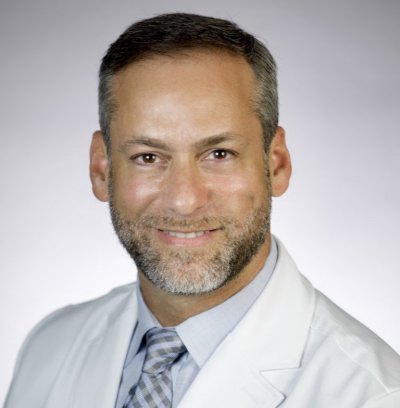
Ron & Sandi Simon Executive Medical Director Endowed Chair, Chief of Neurosurgery, Pickup Family Neurosciences Institute
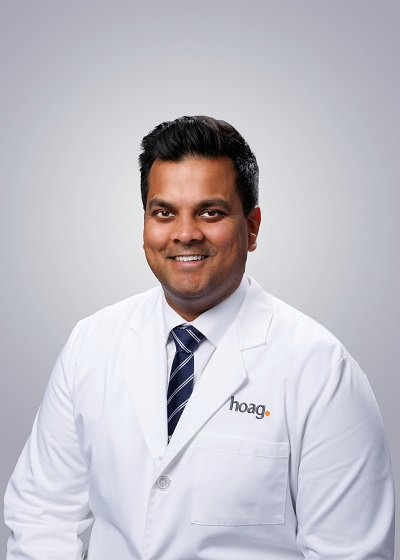
Pain Management, Center for Pain Management

Pain Management, Center for Pain Management
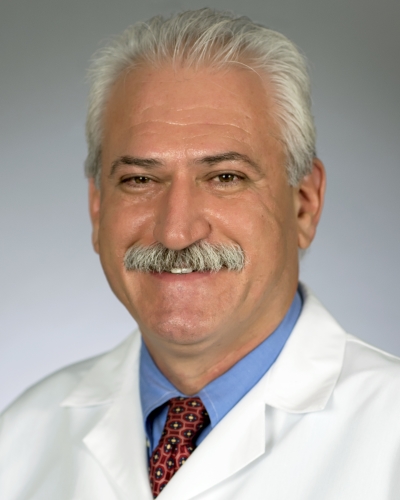
<p>Dr. Esmaeili is the Medical Director at the Fudge Family Acute Rehabilitation Center. He started his health care journey as an ER Tech, then a Registered Nurse and later a Board Certified Physical Medicine and Rehabilitation physician. From 2002 -2018 he served as Medical Director of the Rehabilitation Institute at Palomar Health in San Diego county, CA. His decision to specialize in Physical Medicine & Rehabilitation is a result of his medical rotation on a Spinal Cord Injury unit. Dr. Esmaeili grew up admiring Albert Schweitzer who was a missionary physician, humanitarian, theologian and Noble Peace Prize winner. One of Albert Schweitzer’s quotes reflects Dr. Esmaeili thinking: “Success is not the key to happiness, happiness is the key to success. If you love what you are doing, you will be successful.”</p> <p>An important aspect of Dr. Esmaeili’s leadership is the understanding of the team, and supporting nursing, therapy, social work and support staff to achieve quality patient care. He understands the challenges and contributions of every discipline in a rehabilitation team. He works with staff members to influence and enhance their skills and knowledge, supporting them to work at their full potential.</p> <p>Dr. Esmaeili believes every patient has the potential to improve and move closer to functional and cognitive independence.</p>
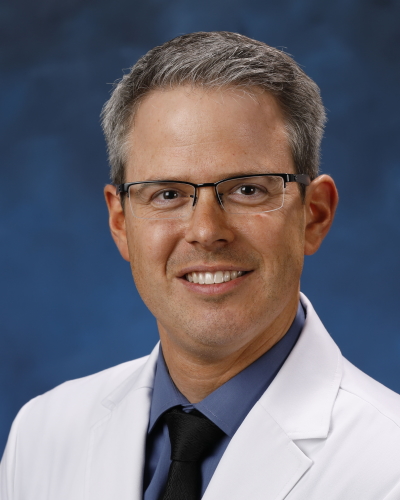
Dr. Reed serves as Chief of Inpatient Pain and Outpatient Addiction Services at Hoag, as well as Director of Consultation and Liaison Psychiatry, and Medical Director of the SolMar Residential Program. He is triple board certified in psychiatry, pain medicine and internal medicine. Dr. Reed received his doctorate of medicine (MD) and masters of science in public health (MSPH) from the University of Utah. Following medical school, he completed a five-year combined internal medicine and psychiatry residency at the University of California, Davis. He subsequently completed an additional one-year fellowship in pain medicine through the Department of Anesthesia and Pain Medicine at UC Davis. Prior to joining Hoag, Dr. Reed served in various capacities at the University of California, Irvine, including Assistant Dean for Student Affairs, Director of Consultation and Liaison Psychiatry, Associate Psychiatry Residency Training Director, and Director of Education for the Train New Trainers Primary Care Psychiatry Fellowship. An expert in the treatment of medically complex patients with intersecting addiction, psychiatric and pain conditions, Dr. Reed remains an educator at heart and enjoys his roles educating, training and collaborating with staff at all levels – counselors, therapists, security personnel, nurses, nurse practitioners and physicians – as he helps direct the expansion and integration of Hoag’s programs in neurobehavioral health.

Physician Assistant, Neurosurgery, Spine
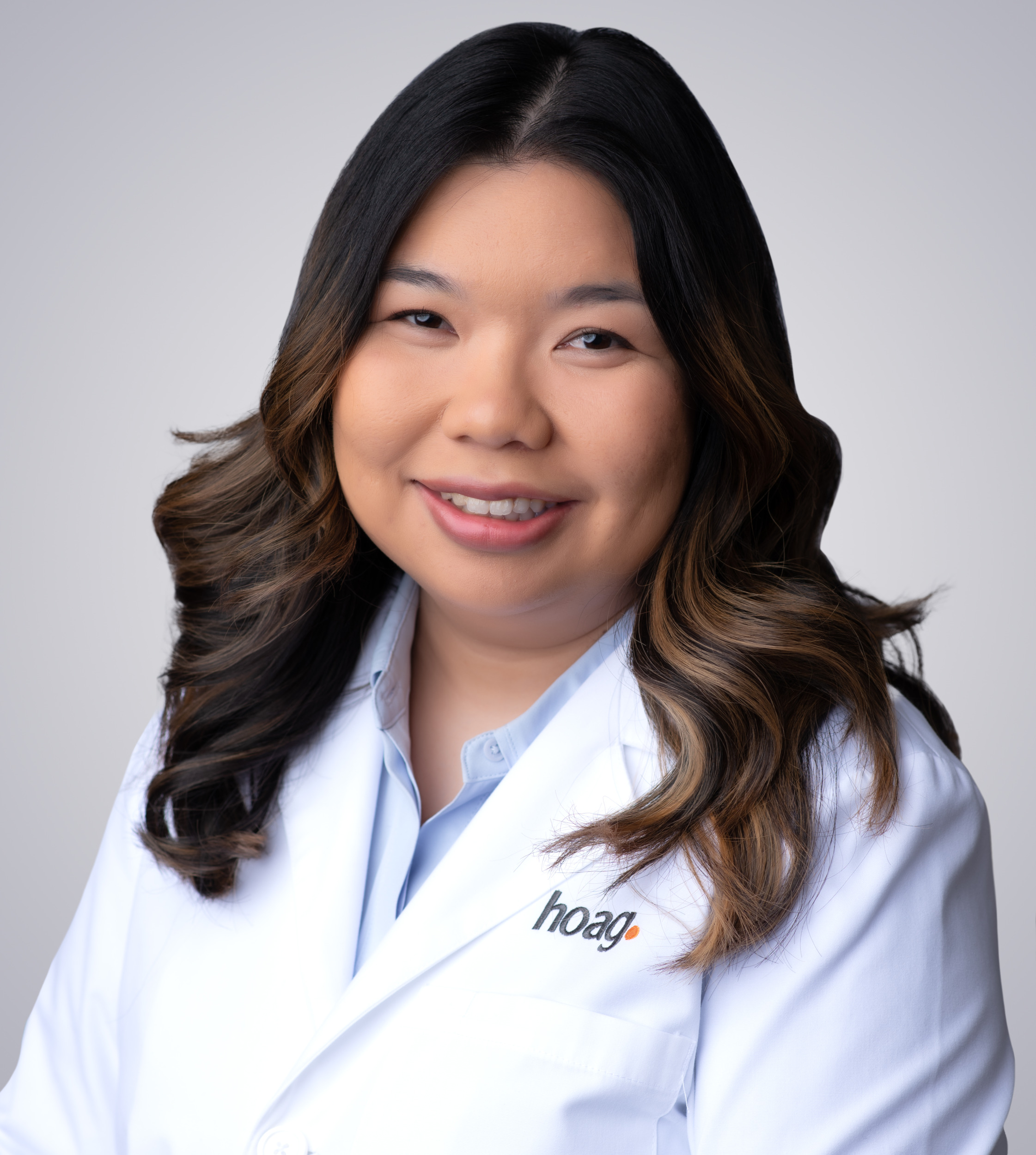
Physician Assistant, Neurosurgery, Spine

Physician Assistant, Neurosurgery, Spine

Nurse Practioner, Center for Pain Management

Physician Assistant, Center for Pain Management
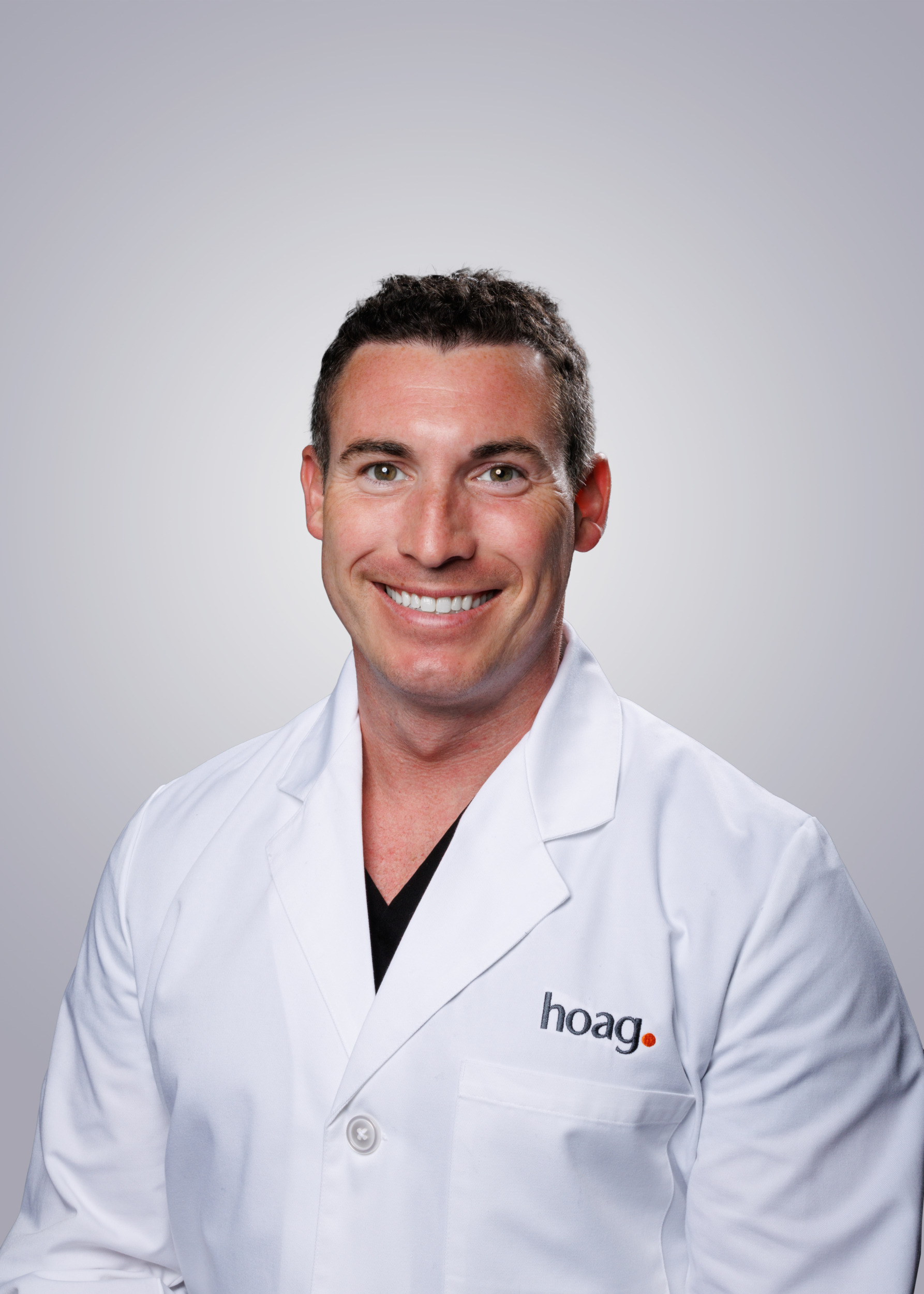
Physician Assistant Center for Pain Management
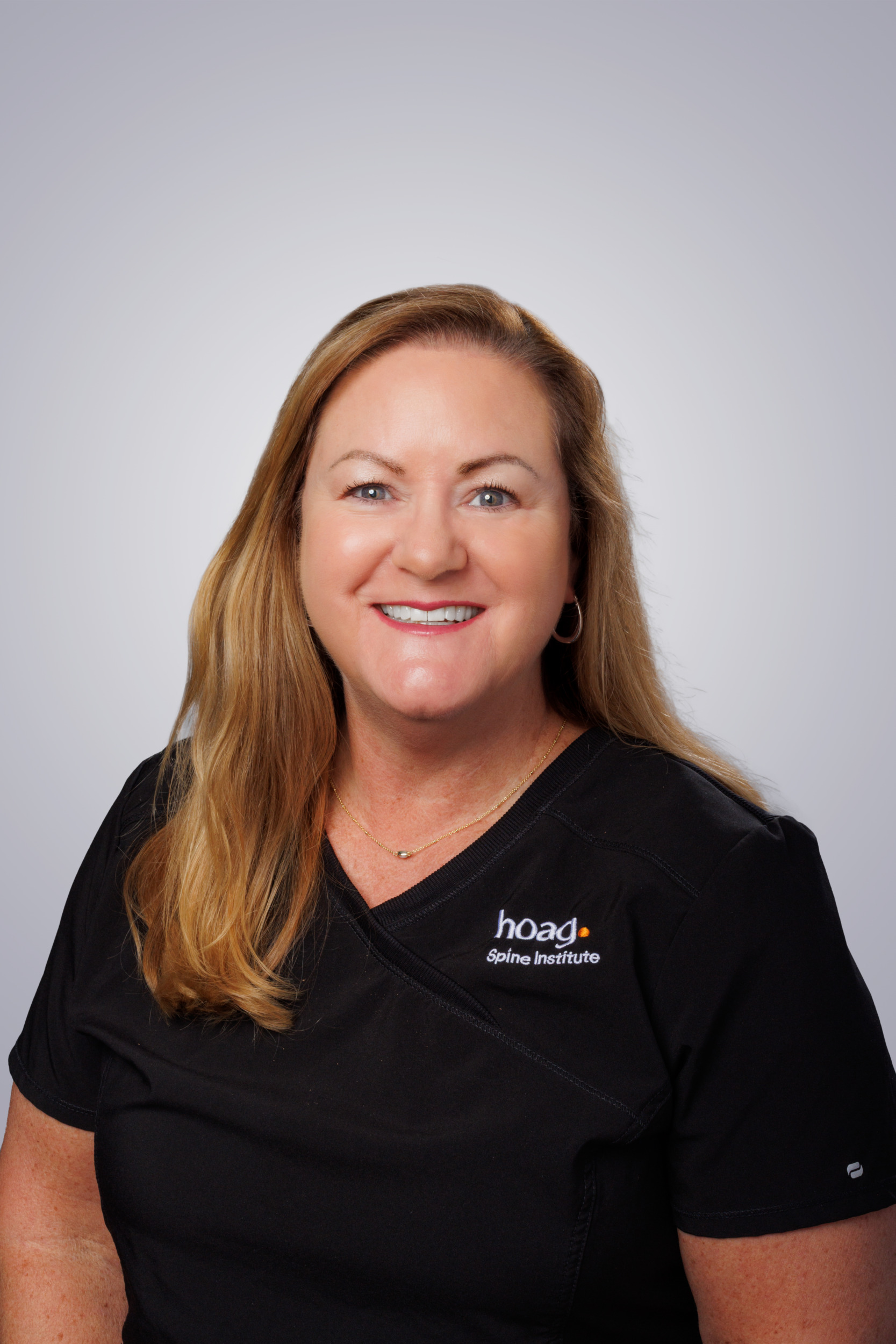
Outpatient Care Coordinator

Spine Care Navigator, Neurosurgery, Spine